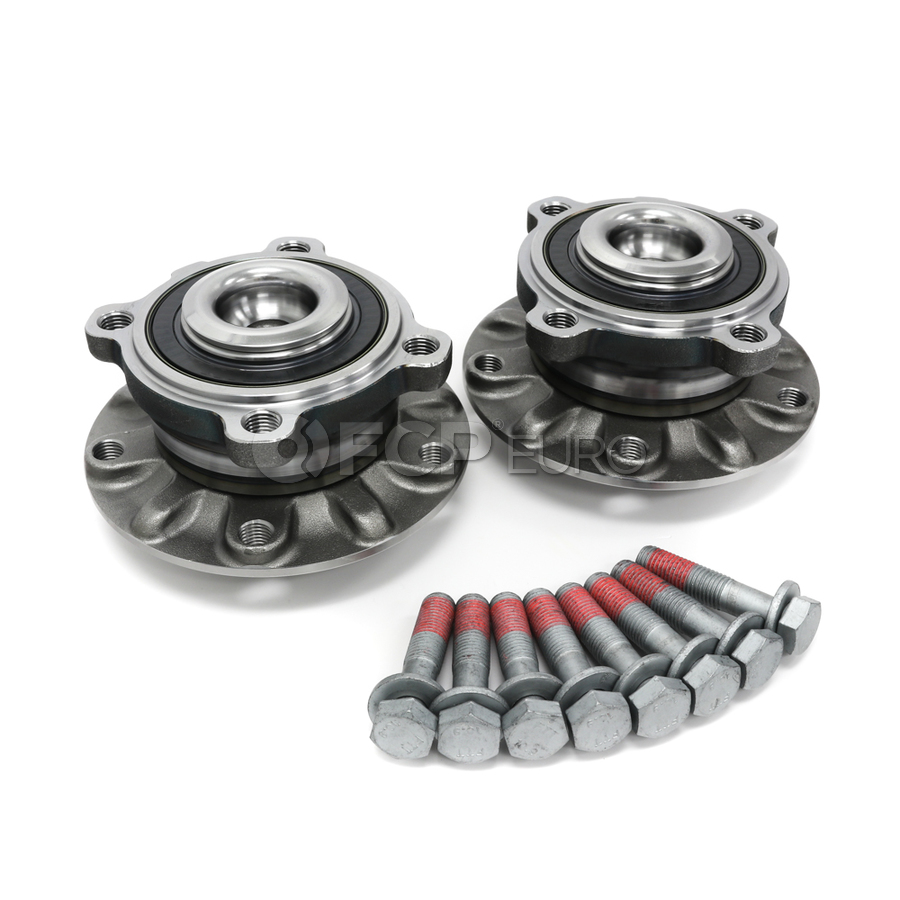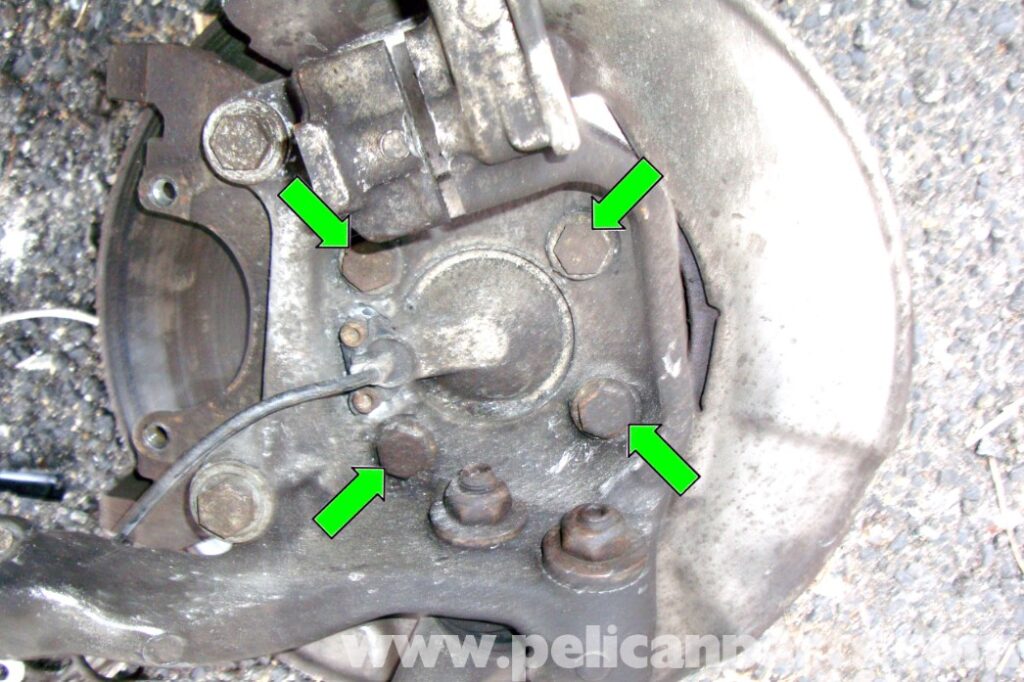In the repair world, there are “hard failures” and “soft failures.” Hard failures are things that instantly drag a car to a stop when they break. Broken ball joint? The worst type of hard failure—the front wheel folds under the fender like a broken ankle and you lose control of the car. Bad fuel pump? Usually a hard failure—it either pumps or it doesn’t. (Okay, there are some exceptions. The one my E39 wigged out on a low tank in hot weather, then recovered. I replaced it anyway.)
In contrast, soft failures are things that either give you ample warning before they fail completely, or their failure doesn’t immediately drag the car into the breakdown lane. A textbook soft failure is when the alternator or voltage regulator dies. Even though the battery is no longer being charged, the car can continue to run for some amount of time off the battery alone. On a vintage car like a 2002, you can likely drive for hours during daylight before the battery no longer has enough juice to light the spark plugs. On a late-model car loaded with electric motors and control modules, you might have more like fifteen minutes to an hour—enough to get to a rest area, possibly even a repair shop.
Perhaps the down comforter of soft failures is a bad wheel bearing. Loss of lubrication will cause them to wear, resulting in a rumble that sometimes can be more felt than heard (they may also squeak or squeal), but the failure process is gradual. They’ll get louder as wear and play embrace each other in an ever-widening downward spiral, but you’d have to be an idiot not to hear it and address it, making outright failure rare. Wheel bearings are pretty robust in BMWs. After owning over 70 cars, I’ve only ever seen one wheel bearing that completely self-destructed—a ’67 2000CS I bought came with one that had destroyed the stub axle. I had to replace the entire front strut assembly.
Although bearing rumble is usually quite clear, part of testing for a bad wheel bearing is to jack the car up, set it on stands, grab the wheel at the 6:00 and 12:00 positions, and push-pull it. If you’re hands are at 3:00 and 9:00 instead, play in a front wheel can come from anything in the steering mechanism, but 6-and-12 play pretty much has to be coming from the wheel bearing. In an old-school car with adjustable wheel bearings, if there’s no rumble, you can try adjusting the bearing by pulling the cotter pin and moving the castellated nut by one notch, but play plus rumble equals bad.
On 1970s-era BMWs, there are inner and outer front wheel bearings with each sitting in its own race that’s pressed into the hub. Since the front discs on these cars sit on the inside surface of the hub, and since the bearings lift out of their races and present their greasy private parts to you when you pull the hub off the spindle, the advice is that, if there’s no documentation on how old the bearings are, to replace both sets of bearings on both sides when the front discs are replaced.

Fresh rotors and wheel bearings on my 2002tii.
Rear wheel bearings on old BMWs are incredibly robust. I’ve only ever had one go bad. It was on a Bavaria that my wife and I took on vacation to Martha’s Vineyard in 1986. We were foolishly driving in near-hurricane conditions and got caught in a tidal surge on the road that runs on the barrier beach between Edgartown and Oak Bluffs and drove through water that was deeper than we expected (as I said, foolish). On the drive home, the right rear wheel bearing began rumbling ominously. At the time, I didn’t own the necessary bearing puller, and had to take the car into the late great Beaconwood Motors who had the back page ad of Roundel for a generation. It was one of a handful of repairs the past 40 years I’ve paid someone else to do.
On newer BMWs, the front wheel bearings are very different than on the 1970s-era cars. About ten years ago, I owned a ’99 E39 528iT wagon that needed struts, control arms, and other front-end work. The E39’s wheel bearings are part of an assembly that includes the front hub—the wheel bearing assembly bolts to the steering knuckle, and the wheel bolts directly to the bearing assembly.

The E39’s wheel bearing assemblies and their pre-Loctite-coated bolts. [Image courtesy of FCP Euro.]

The bolts securing the wheel bearing assembly from the back. [Image courtesy of Pelican Parts.]

Why do I have these and why can I lay my hands on them instantly? As Joseph Fiennes said in Shakespeare in Love, “It’s a mystery.”
And with that, I can tell this week’s story.
I was driving my 2003 E39 530i up to do some recording in Chelmsford, about 30 miles north of me, when I began to hear and feel a rumbling coming from the left front of the car. It ramped up over several minutes, but then plateaued. If it instead had gotten VERY loud VERY quickly, with obvious metal-smacking-against-metal instead of the more gentle rumble of a worn bearing, that would be the hallmark of loose lug nuts, something you need to pay attention to IMMEDIATELY because you may have only five or ten seconds before the wheel falls off.
Still, to be careful, I pulled into the right lane, slowed down, and listened. The somewhat rapid onset was uncharacteristic of a wheel bearing, but the other symptoms fit. Since I had a recording appointment with a fiddle player, I preferred to keep going, unless of course I couldn’t for safety reasons. The rumbling remained at a constant low level, so I assumed it was a wheel bearing doing the soft failure thing, and continued on.
After the recording session ended, I began driving back toward the highway. As I approached a small service station, I debated stopping to have them throw the car up on the lift and check it, but again, since the rumble remained low and constant, I headed home. Still, to err on the literal side of safety, I stayed in the right lane, turned the flashers on, and drove at 50 mph.
When I arrived home, I pulled the nose of the car right into the garage, then hopped on the laptop to get a set of front wheel bearing on order. I looked on FCP Euro, and was more than a little surprised to find that a front wheel bearing kit with German FAG wheel bearing assemblies now cost $312. Of course, I still had that set of bolts, so I could save myself the $4.29 per bolt right there. I mean thirty-four bucks is thirty-four bucks, right? One FAG bearing was $139. I began entertaining replacing just the left bearing, then price-shopping other manufacturers, when I decided that I should be certain that the wheel bearing was really the problem.
I intentionally jacked up the car at the right front wheel—the one I didn’t think was making the noise—to get a baseline. I grabbed it at 6 and 12, rocked it, verified it was tight, and spun it. As expected, it was quiet.
I then jacked up the left front wheel and rocked it at 6 and 12. Yup, play. Then I spun it. Yup, rumbly. No doubt—a bad left wheel bearing. I set the car back down and began to walk back to the computer to order the bearings, vividly recalling how much of a pain in the butt they were to replace in the 528iT wagon ten years ago. I wondered if maybe still having those eight spare bearing bolts had made the whole thing a matter of fate.
Then, a little voice in my head said, “You know what else could make that rumble? Loose lug nuts.”
My ever-rational left-brain shot back indignantly. “You can’t be serious,” it sneered. “You actually had a wheel fall off that 1600 back in 1984. And you’ve had two close calls, both more recently than you’d like to admit. You know what loose lug nuts sound like, and this wasn’t it. And you learned your lesson. You conditioned yourself to always tighten lug nuts with a torque wrench. It’s not loose lug nuts. Really. It’s not. It can’t be. You are not that careless.”
And so, just to be certain, to placate my left brain and make sure I didn’t go to all that work unless it was absolutely necessary, I took a 1/2-inch ratchet and a 17mm socket and checked the wheel’s lug nuts.
Four of the five of them were loose.
Oh. My. God.
I snugged them down, grabbed the wheel at 6 and 12 and verified that the play was gone, spun it and verified that the noise was gone, let the car down off the jack, and tightened them up with a torque wrench.
Then I checked the lug nuts on the right front wheel. While none were loose to the point of being free-spinning, all were substantially below the 88 foot-pound torque spec. The rears were fine.
I can only speculate what happened. Due to the space constraints in my garage, when I swap winter/summer wheels, I’ll usually pull one end of the car in, jack it up, swap both wheels, snug the lug nuts with a ratchet, let the car down, torque the nuts, air the tires, then pull the car out, flip it around, and do the other side. I must’ve gotten interrupted. Maybe I received a text I felt that I needed to respond to. Maybe my wife was leaving and I walked outside to kiss her goodbye. Maybe I had back pain and took a break. I don’t know.
To make sure this doesn’t happen again, I’m instituting a new system of checking the lug nuts on all four wheels after I’ve done any work where a car is jacked up for any reason.
And I’m going to have some sort of voodoo ceremony with that bag of Locktite-coated wheel bearing bolts. I can’t tell whether they were bad juju that triggered the problem or a talisman that warded off disaster, but clearly they played some role outside the normal Western vectors of Newtonian mechanics and Cartesian cause and effect. They deserve reverence.
—Rob Siegel
____________________________________
Rob’s newest book, The Best of The Hack Mechanic, is available here on Amazon, as are his seven other books. Signed copies can be ordered directly from Rob here.





















